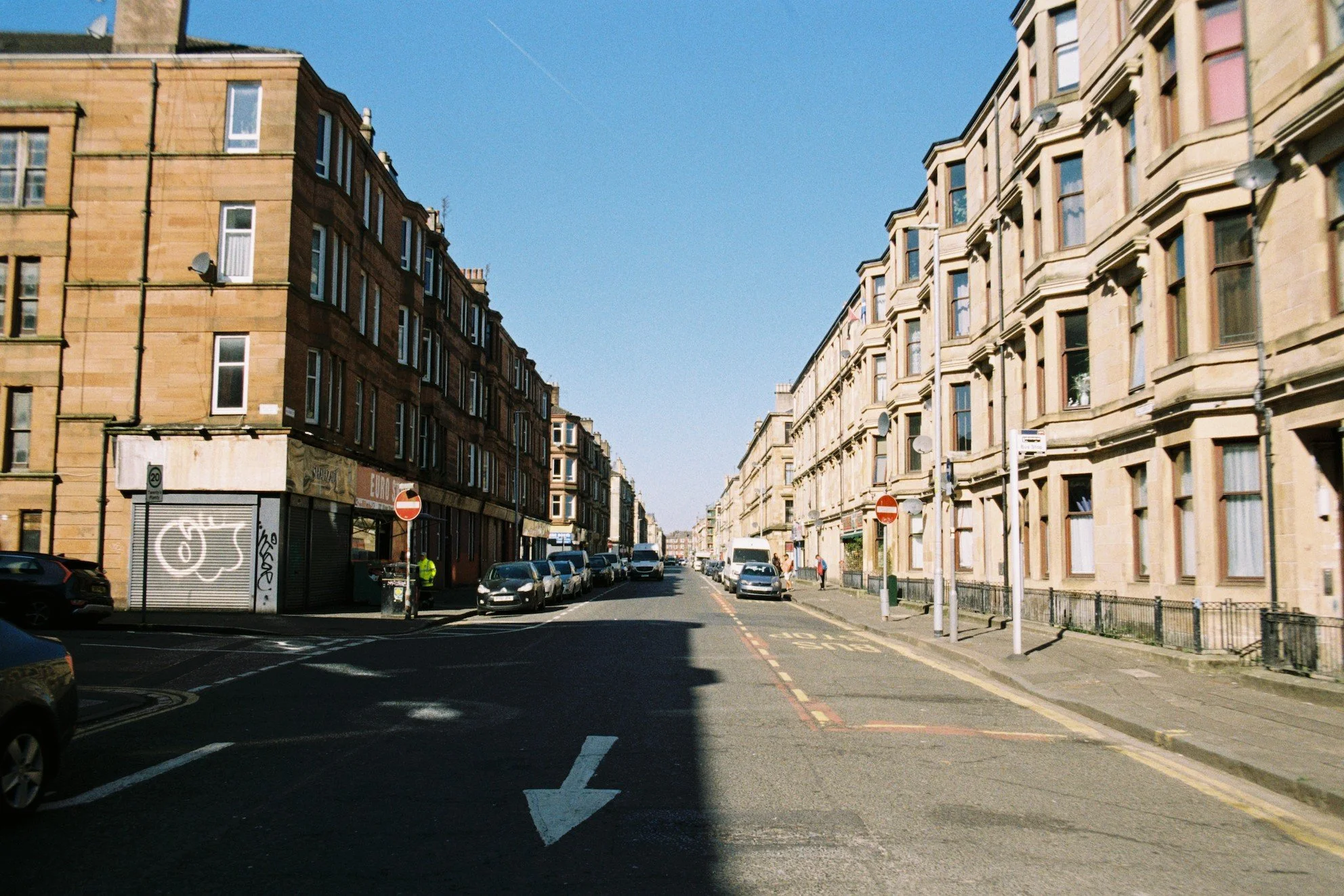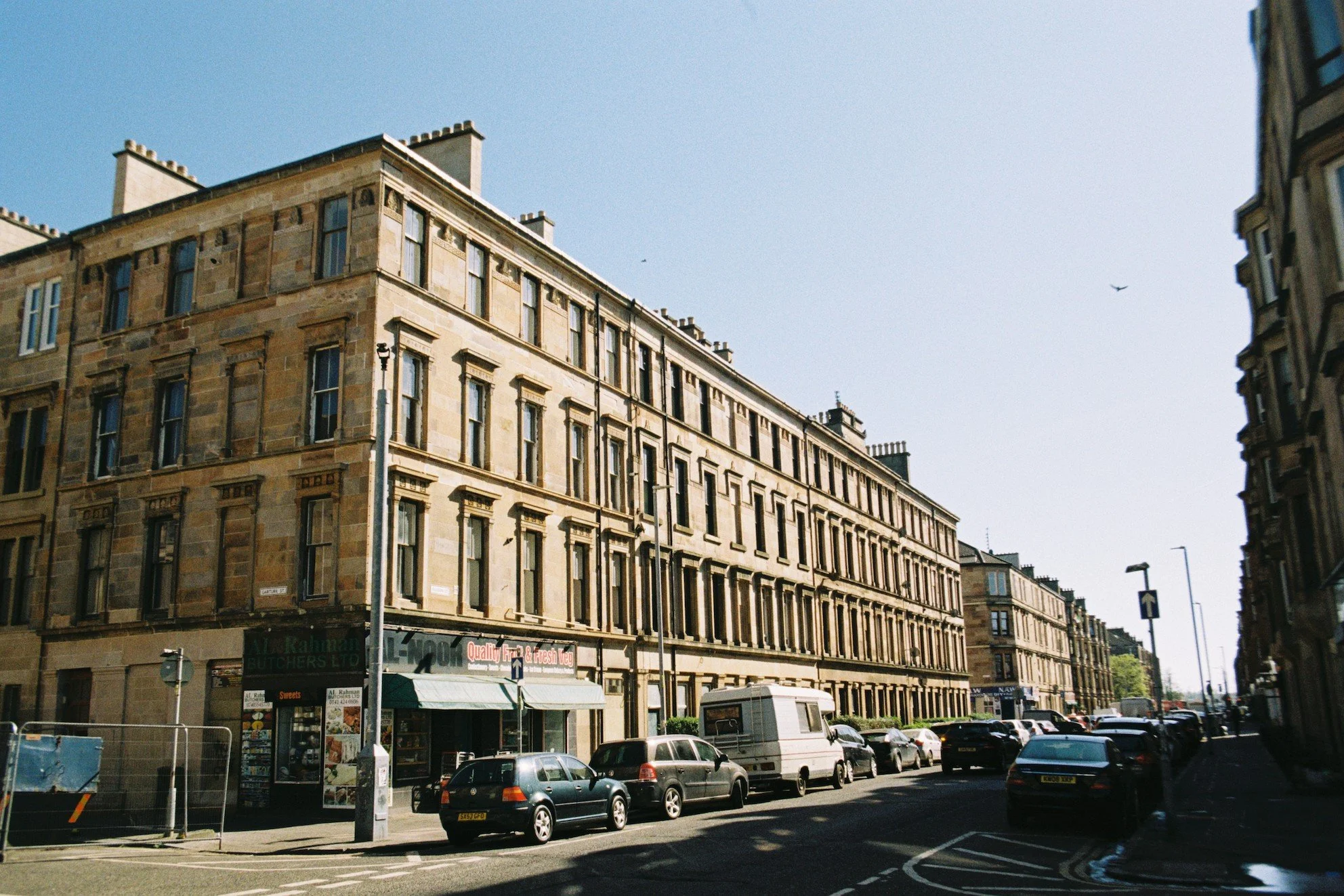Stories from our streets: Allison Street
Often misattributed to a colliery owner’s daughter, Allison Street’s name is tied to an anti-union baronet. In this piece, writer Stacey dives into Allison Street’s complex history, architecture and diverse communities shaping the Street.
By Stacey Anderson | Photo by Thomas Cornwallis
I once heard (and credulously just accepted) that Allison Street and two of its perpendicular roads, Daisy and Annette, were all named after the daughters of prominent 18th century ironmaster, William Dixon – located in the village which housed the workers of his Little Govan Colliery. In actuality, though Daisy and Annette may boast such claims, Allison Street has its own, distinct history.
Allison Street is more likely to be named after Sir Archibald Alison, 1st Baronet, according to author of Villages of Glasgow, Aileen Smart (despite the variance in spellings). Alison was a 19th century advocate, historian, public prosecutor and writer.
The 1st Baronet was descended from ‘good stock’ with famous scientists and literary figures dawning from his mother’s side, whereas his father's side consisted of merchants, and the Lord Provost of Edinburgh. He wrote on the History of Europe, across 18 volumes. For his verbose writings he was famously parodied in former Prime Minister Benjamin Disraeli’s novel, Coningsby, where Archibald was loosely disguised as ‘Mr. Wordy.’
During his service in public prosecution, his involvement in suppressing riots and strikes is recorded in several instances. There is one particularly dramatic incident from 1837 in which, whilst acting as Sheriff, Alison had to respond to a murder of a ‘new hand’ amid trade union uprisings. Two informers provided information about a secret organisation aiming to carry out more assassinations, covertly attended in a meeting conducted in a room entered via a trap door. The conspirators were subsequently arrested, with the workers returning to their jobs by Monday.
Despite seeming to rule against unions and workers, Alison appeared to enjoy a fair popularity in the city up until his death in 1867. Crowds of up to 150,000 people, most said to be mill and iron workers, were estimated to turn out to witness the route of his coffin from his home, Possil House. A bust of Sir Archibald is on show at the Scottish National Portrait Gallery in Edinburgh.
The Street
In 1875, the building of a block of tenement flats designed by Alexander ‘Greek’ Thomson was completed by business partner, Turnbull, not long after the architect’s death. A commemorative plaque from the Alexander Thomson trail can be seen outside 285–289 Allison Street. Prices for these flats dropped after Thomson’s death but the inspiration from antiquity remains visible on the sandstone block to this day, as the flats feature distinctive anthemion decoration in the form of detailed motif palmettes and meander patterns above the window panes.
Other notable buildings include the former Queen’s Park Fire Station at 52 Allison Street, which was designed to reflect the gothic revival Scottish Baronial style. This was built in 1896 by A.B. McDonald, the architect also known for designing Govanhill Baths amongst many other buildings across the city.
The tenements were built to house employees of mills and the ironworks, and soon the street was beginning to reflect this as a wealth of tobacconists, off sales, dairy shops and cafes also began to populate the street in the first half of the 20th century. Allison Street itself is one of Govanhill’s longest, spanning from Aikenhead Road to Pollokshaws Road. Featuring busy intersections which cross Cathcart Road and Victoria Road, an area once considered to be ‘a beautifully secluded place’ did not retain this reputation after Industrial developments. Allison Street became the host of routes 20 and 7/7a when the tramways were in operation from 1872 up until 1962.
Throughout its history, the long street has since become a melting pot for the many communities who have come to call Govanhill home. In the 1960s the Glasgow Hebrew Burial Society set up an office on the street and the street became a hub, with other Jewish business and delis and kosher butchers finding their homes on the street. Allison Street also saw migration from Hindu, Sikh, Muslim, and Eastern European communities moving into the area and saw a rise in grocers, bakers, among many more traders which populate the street today.
Your memories of Allison Street
Kevin Kelly remembers wild fruit fights across the street once the shops had shut for the day. There used to be far more fruit shops than there are now, he recalls. Damian Tausney and Patricia Sitek both remember the Unique chip shop as a local favourite. Maria Kus recalls a time over 30 years ago when Allison Street had two butchers and a post office, packed on pension days – “all now long gone”.
Tausney also shared his memories of Wilson's butcher, a local favourite for tea. The Wilson boys would make steak pies “while Jack and John would be giving a bit of banter and there’d be women who were there getting their man’s tea for the night.” Tausney adds that further along, a delicatessen had a range of items: “The first thing that hit you was the smell of bagels and bread. Then you spotted the stickers and foreign food packets and you felt you had a flavour of being abroad. I loved it.”
This is tan ongoing series. Does your street hold some interesting stories and memories? Send to newsroom@greatergovanhill.com.


